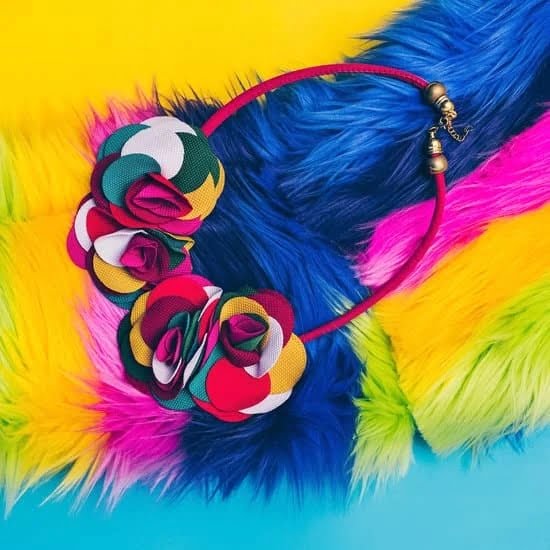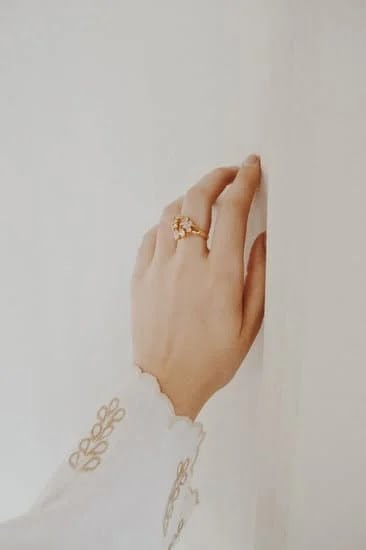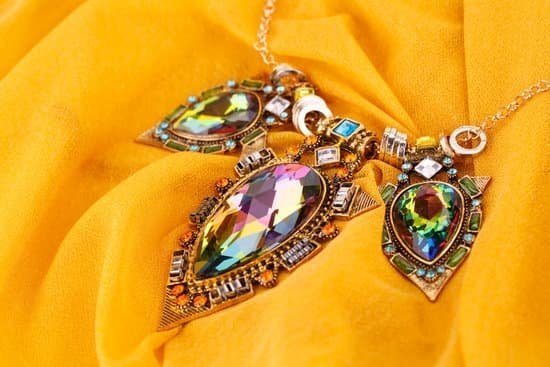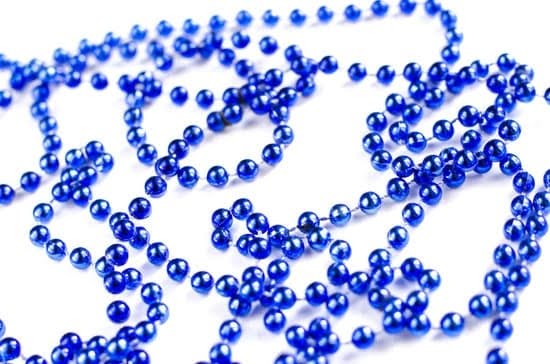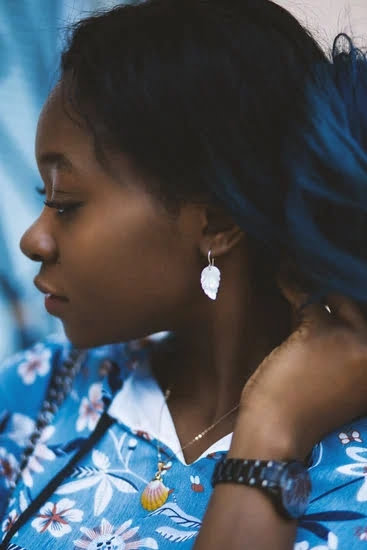Introduction
Found object jewelry is a type of wearable art, made from actual items or scraps that have been found. It often requires a creative eye and sense of resourcefulness to take something as simple as a broken toy, discarded necklace, screws or coins and turn it into a piece of jewelry. Objects and pieces once considered “junk” are salvaged, re-imagined, reconstructed, taken apart and then pieced back together in an artistic way to become stylish pieces.
This idea has become popular not just because these pieces of jewelry look unique but also because the story behind how each piece was made further adds to its charm. Every item used in the creation of these accessories has gone through some sort of transformation which highlights the creativity and craftsmanship needed for this type of work; giving each piece its own special story. Whether it’s upcycling something old, combining two pieces together to create one beautiful item, or using a vintage trinket – all items that go into making jewelry with found objects are carefully thought out and will often take you on a journey back in time.
History of Found Object Jewelry
Found Objects Jewelry, also known as “assemblage jewelry”, is an artistic form of jewelry that involves collecting multiple objects and re-working them into stunning wearable art. Found Object Jewelry has become increasingly popular in recent years due to its creative nature and accessible aesthetic. It has become a favorite among both professional designers and amateur craftspeople alike.
The concept of Found Object Jewelry has been around since the 1940s when artists began repurposing old materials such as coins, metal objects, broken glass, tools, keys and buttons, into unique pieces of wearable art. This trend has grown and evolved significantly since then; today, found object jewelry often uses items such as feathers, fabric scraps, stones, nails and yarn. In some cases these functional items are included to give the piece a specific function or story; for example a key necklace may represent not just a stylish accompaniment but also symbolize a link between two people; or a stone pendant might mean strength or protection from one person to another. Collecting and making Found Object Jewelry can be done on several different levels: from treasure hunting vintage shops for knick knacks to little pieces of history purchased from antique dealers – each item opens up one’s imagination for creating something beautiful.
The practice of Found Object Jewelry reflects a fundamental interest and appreciation for beauty as well as community relations: it provides wearers with the opportunity to express their personalities by customizing their own wearable works of art. Moreover it serves as something reminiscent of days gone by – memories of family members who have passed on – offering new life in tangible form through the craftsmanship that goes into making these fascinating accessories.
Materials
Found object jewelry is a widely popular type of jewelry that is created using recycled and repurposed objects, as well as new materials such as fabric, leather, beads and silver. Examples of recycled items that can be used to create found object jewelry are buttons, old coins and vintage postage stamps. Repurposed materials like jewelry components from broken necklaces, earrings or pins can also be used. Textiles like fine fabrics, vinyl and suede can be incorporated into found object pieces while customizing them with colorful beads or embellishments crafted out of crystal or glass. Leather cording and strips of leather provide an organic texture to the final product, adding dimension. And metal elements can be added in the form of charms, antique tools and paperclips. Many found objects appeal to the “steampunk” aesthetic with upcycled parts like watch gears giving a sense of movement to the art piece. The combinations of such materials make every piece entirely unique to its creator’s vision – adding personality that no store-bought item could match!
Craftsmanship
Found objects jewelry is a unique form of craftsmanship that requires creativity and cunning to create beautiful pieces of art. It involves taking found objects, which could be anything from paperclips to bottlecaps, and incorporating them into modern jewelry designs. Special tools are used to assemble the pieces, such as chain-nose pliers, wire cutters and files. By combining different materials and textures together with metal findings or a threading medium, it’s possible to create intricate yet wearable art. Engraving techniques and waxing may also be used for certain types of designs or when shaping tiny components. For larger pieces, a soldering iron and flux can be used to strategically put the pieces together. As the process of creating this type of jewelry is time-consuming, proper care must be taken to ensure durability and strength so the pieces last over time.
Popular Found Objects
Found objects jewelry is a unique form of jewelry making that uses reclaimed and repurposed objects from places like flea markets, car-boot sales, thrift shops or even found around our homes and gardens. Many people love to create meaningful pieces with a connection to history or sentimentality. Some of the most popular objects used in found object jewelry are keys, coins, buttons, stones and beads. Other popular items include seashells, door knobs and pulls, vintage earrings, old photographs, nostalgic trinkets like charms and toys as well as driftwood pieces. Repurposed broken items such as watch faces with missing hands can create a truly innovative approach to upcycling and sustainability. Found objects can be used to create necklaces, bracelets, earrings and anklets with so many creative possibilities limited only by your imagination!
Design Trends
One of the most popular trends associated with found object jewelry is the incorporation of natural elements such as shells, stones, feathers, and wood pieces. This trend gives an interesting texture to the jewelry and also a sense of vibrancy because of the pop of colors that come from these natural elements.
Another popular trend is the use of primary colored beads or objects to create fun yet simple designs. This trend helps to enhance any outfit while remaining timeless.
Repurposing materials such as old buttons, coins, keys and clothing items has seen a surge in popularity recently due to its creative nature. People are using this trend as an outlet for personal expression by putting old and unique items together to form intricate pieces without spending a lot of money.
Recycled plastic straws are becoming increasingly popular in found object jewelry due to their bright colors and versatility when mixed with other elements. This trend helps bring awareness about environmental issues while also creating interesting statement pieces for each wearer’s individual style.
Finally, the bolder statement pieces remain a long time favorite among found object jewelry trends since they help show off personality through color combinations and textured materials. These type of pieces attract attention as a result of their expressive vibrancy which can be used as great conversation-starters when accompanying any special look.
How To Wear Found Object Jewelry
Found object jewelry is a great way to showcase creativity and personal style. To wear it, begin by choosing the right types of objects for your look – items that are lightweight and that have interesting shapes and colors. Once you have a few pieces, find clothing and other jewelry pieces to complement them.
Pair light colored or plain found objects with vibrant colors to create contrast. Choose geometric shapes to bring out some structure in your outfit, or choose organic shapes and colors to create a soft and bohemian inspired look. If you’re feeling daring, try mixing different types of metals for an edgier look.
When it comes to what else to wear with found object jewelry pieces, keep it simple by wearing classic neutrals like black, beige, white, or grey for a chic ensemble with subtle pops of color. Balance heavier pieces of found object jewelry with delicate necklaces or bracelets made from stones or pearls for a more elegant feel. And if you want something that’s truly unique, layer non-matching statement earrings together – one made from an interesting thrift shop item and the other an eye-catching piece of contemporary art jewelry.
Have fun experimenting and remember that the possibilities are endless when it comes to styling found object jewelry!
Inspirational Examples
Found objects jewelry can be an incredibly unique and stylish way to add a personal touch to any outfit. Whether selecting an antique pocket watch as a necklace or a china saucer as a bangle, these finds are the perfect accessory for all kinds of looks. The versatility of found objects jewelry lies in its focus on uniqueness, which gives each piece its own character and allows you to customize it freely with your own preferred style.
For example, Necklaces made out of vintage spoons are ideal additions both to casual jeans and t-shirt ensembles as well as more formal wear. Likewise, charms lifted from beloved novelties make fun statement pieces when paired with coordinating colors or patterns that match your taste. Brooches hewn from old keys can even be fired up with bright colors to give them added flair – making them ideal pieces for dressed-up occasions like weddings or galas.
In short, found object jewelry provides endless opportunities for customization that let you express yourself through what you’re wearing – so go ahead and have some fun searching for special pieces that speak directly to your individual style!
Where To Buy Found Object Jewelry
One of the best places to buy found object jewelry is online. Shopping online for jewelry allows you to compare a vast selection of items, see detailed descriptions and images of the pieces and make price comparisons. Sites like Etsy have an entire section dedicated to upcycled and salvaged jewelry from around the world at different price points, so it’s easy to find something that works within your budget. Additionally, shopping online gives you access to vetted artisans who are skilled in creating beautiful jewelry out of reclaimed items.
When searching for upcycled jewelry, it’s important to take the time to vet any artisan you’re thinking of buying from carefully. Look into customer reviews and make sure they offer a return or exchange policy if the item you receive isn’t what you expected. It’s also worth researching how their pieces are made – how exactly were they created out of found objects? Knowing this will help give you a sense of the quality and craftsmanship that goes into each piece.
Another great option is visiting local shops that specialize in handmade items crafted from recycled materials. This is an especially good idea if you want a unique piece that not everyone else will be wearing! You may even find some artisans who partner directly with reclamation stores to ensure their material is sourced responsibly or can bring your own favorite found object for them turn into a piece of bespoke jewelry. Buying locally also helps support small businesses and artisans in your community, which has numerous benefits for everyone involved!
Conclusion
Found object jewelry is an innovative way of creating unique and one of a kind pieces of jewelry. It involves utilizing existing items such as coins, stones, keys or other trinkets to craft stunning and meaningful pieces of jewelry. By upcycling found objects, this type of jewelry presents a sustainable option for expressing personal style. The potential impact of found object jewelry in the future includes increasing awareness around responsible manufacturing practices and encouraging more mindful consumption. Making conscious lifestyle choices like opting for handmade and small-batch designs promotes local culture and creative skill sets while reducing the strain on limited resources. As such, found object jewelry could play an important role in promoting sustainable society for generations to come.

Welcome to my jewelry blog! My name is Sarah and I am the owner of this blog.
I love making jewelry and sharing my creations with others.
So whether you’re someone who loves wearing jewelry yourself or simply enjoys learning about it, be sure to check out my blog for insightful posts on everything related to this exciting topic!

